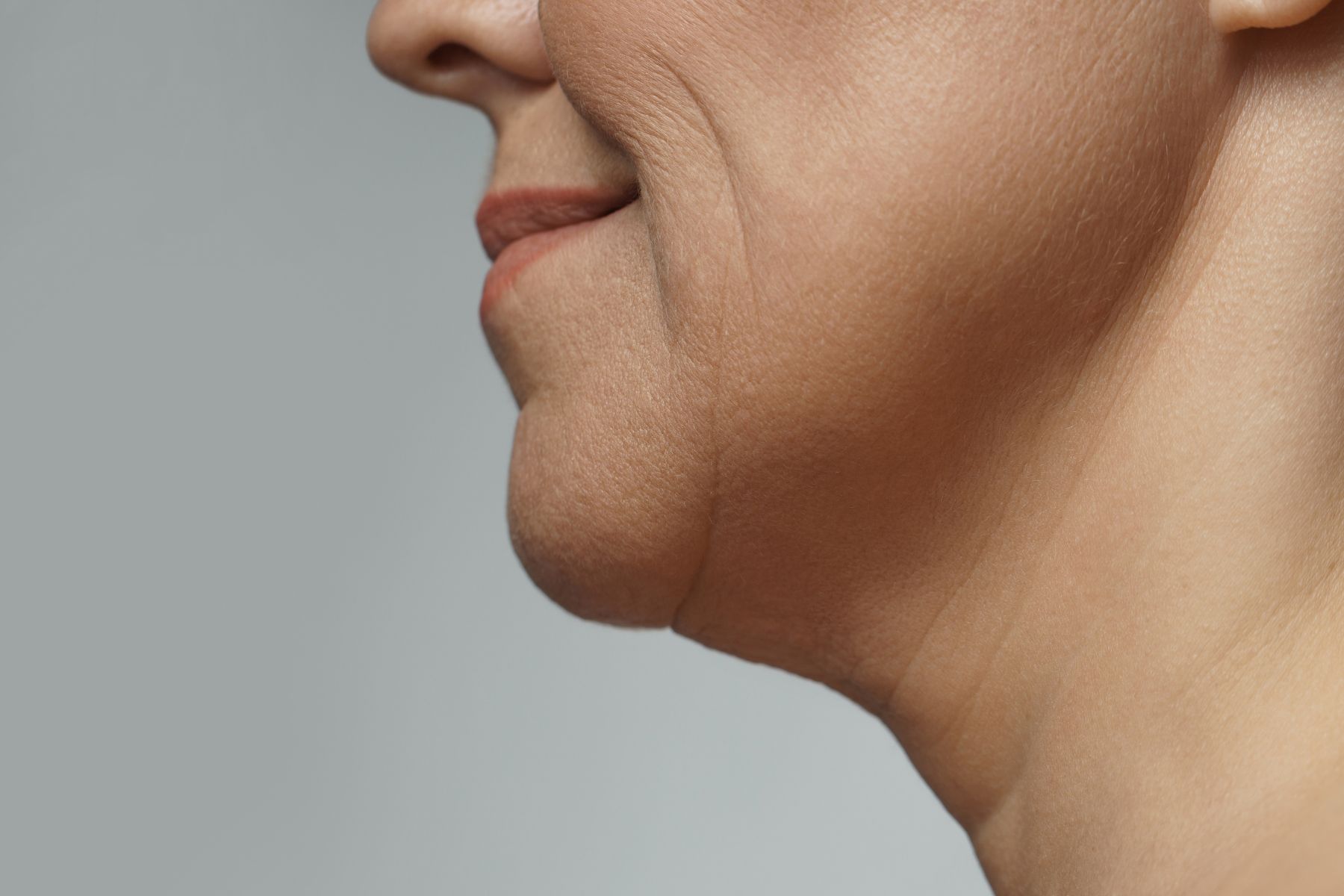The Natural Progression of Sagging Skin
It often starts subtly.
One day, your skin looks fine. Then, slowly over the years, you notice your cheeks aren’t as lifted, your jawline isn’t as defined, and smile lines seem to stick around longer. Maybe you look in the mirror and gently pull your skin back to where it used to be, wondering when things started to change.
This is a reality most people face in their late 30s to early 40s—some earlier, some later. Sagging skin is not just a cosmetic issue. It can make people feel older than they are, tired when they’re not, and less confident overall.
But the good news? There’s a lot you can do—at home, affordably, and non-invasively.

Understanding the Root Causes of Sagging Skin
Sagging skin is a multi-layered issue. Understanding its origins is the first step toward addressing it.
1. Loss of Collagen and Elastin
These are the structural proteins responsible for skin’s firmness and elasticity. As early as your mid-20s, your body begins producing less of both. By the time you’re in your 40s or 50s, production has slowed significantly, leading to visible laxity and sagging.
2. Sun Exposure
Ultraviolet (UV) rays break down collagen and elastin fibers over time. This process, called photoaging, is one of the biggest contributors to early sagging.
3. Weight Fluctuation
Significant weight gain or rapid weight loss can overstretch the skin. After the fat beneath the skin disappears, it often doesn’t snap back, especially as you age.
4. Gravity
Over time, gravity pulls on skin that’s lost its strength, particularly in the cheeks, jawline, eyelids, and neck.
5. Dehydration and Poor Nutrition
Skin that lacks hydration and vital nutrients is more likely to appear dull and slack.
6. Smoking and Alcohol
These substances deplete the skin’s natural support system and reduce circulation, speeding up collagen degradation.
7. Menopause and Hormonal Changes
A drop in estrogen causes thinning and loss of elasticity in the skin. Many women notice an acceleration of sagging in their 40s and 50s due to this hormonal shift.

What You Can Do at Home: A Comprehensive Guide
While cosmetic surgery and fillers exist, many people prefer to explore non-invasive, affordable solutions first. With the right tools and routines, sagging skin can often be visibly improved from the comfort of your home.
Red Light Therapy for Skin Tightening
One of the most effective tools for at-home firming is the red light therapy facial massager available on Amazon. It’s become a go-to option for people who want visible skin tightening without pain, needles, or downtime.
How It Works:
- Red light wavelengths penetrate the skin and stimulate fibroblasts.
- These fibroblasts then produce more collagen and elastin.
- It also improves circulation and boosts skin healing.
- Some models combine vibration, heat, and EMS (electrical muscle stimulation) for added lift.
What Areas It Helps:
- Sagging around the jawline
- Nasolabial folds (smile lines)
- Droopy eyelids
- Neck laxity
- Overall facial firmness
When You’ll See Results:
- First few uses: Temporary plumping due to increased circulation.
- 2–4 weeks: Mild lifting as collagen regeneration begins.
- 6–12 weeks: More dramatic firming and reduction in sagging.
How to Use It:
- Use on clean, dry skin.
- Apply a hydrating serum (like hyaluronic acid).
- Glide the device over the face in upward motions for 5–10 minutes, 3–5x a week.

Additional At-Home Strategies for Sagging Skin
To see consistent, long-term improvement, combine red light therapy with the following strategies:
1. Strengthen Your Topical Routine
Look for ingredients proven to tighten and support the skin’s architecture.
Morning routine:
- Vitamin C serum (boosts collagen)
- Peptide moisturizer (signals the skin to produce more proteins)
- SPF 30 or higher (essential to prevent collagen loss)
Night routine:
- Gentle cleanser
- Retinol or retinaldehyde serum (increases cell turnover and collagen)
- Hydrating night cream
2. Use Facial Massage and Lifting Techniques
Facial massage improves lymphatic drainage and tones the facial muscles underneath the skin.
- Use your hands, a gua sha stone, or a jade roller.
- Always apply light pressure and massage in upward strokes.
- 3–5 minutes a day can reduce puffiness and improve firmness.
3. Weekly Treatments
- Exfoliate 1–2x per week to remove dead skin cells and promote absorption of active ingredients.
- Apply tightening masks with ingredients like clay, egg white, or aloe vera.
- Use a weekly peptide sheet mask or hydrating mask for a moisture boost.

Nutrition and Internal Support
Topical skincare only goes so far. For visible improvements, support your skin from the inside out.
Skin-Supportive Nutrients:
- Vitamin C – Required for collagen synthesis.
- Zinc – Aids skin healing.
- Omega-3s – Anti-inflammatory and hydrating.
- Protein – Needed for the building blocks of collagen.
- Collagen peptides – Shown to improve skin firmness in clinical studies.
Foods That Promote Firm Skin:
- Bone broth or marine collagen powder
- Citrus fruits, berries, and red bell peppers
- Salmon, sardines, walnuts
- Leafy greens and cruciferous vegetables
- Avocados, pumpkin seeds, sunflower seeds
Hydration:
Drink at least 8–10 glasses of water a day. Dehydrated skin looks more wrinkled and loose, while hydrated skin appears plumper and more elastic.
Lifestyle Habits That Make a Difference
Little daily choices matter more than you think.
- Sleep: 7–9 hours per night allows the body to repair and rebuild.
- Exercise: Increases blood flow, which nourishes skin from within.
- Quit smoking: Smoking significantly damages collagen.
- Reduce alcohol: Alcohol is dehydrating and inflammatory.
Timeline: What to Expect from Consistent At-Home Care
| Time Frame | What You Might See |
|---|---|
| Week 1–2 | Increased hydration and glow from improved circulation |
| Week 3–4 | Slight improvement in firmness and skin tone |
| Week 5–8 | Noticeable reduction in sagging, especially around jawline |
| Week 9–12 | Sustained lifting, smoother texture, reduced fine lines |
| 3–6 Months | Long-term structural improvements with regular red light use, stronger skin barrier, and increased elasticity |
Final Thoughts: Is Sagging Skin Reversible?
Sagging skin doesn’t have to be permanent, and surgery is not the only path to improvement.
With the right approach—daily care, supportive tools like red light therapy, and internal nourishment—your skin can look firmer, lifted, and healthier over time.
What’s key is consistency and patience. You’re rebuilding collagen, rehydrating tissue, and retraining the skin. That takes time, but the results are worth it.


